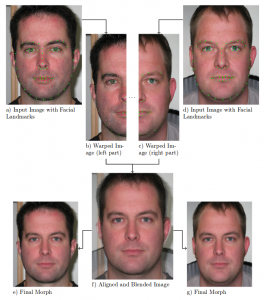
Identification by biometric features has become more popular in the last decade. High quality video and fingerprint sensors have become less expensive and are nowadays standard components in many mobile devices. Thus, many devices can be unlocked via fingerprint or face verification. The state of the art accuracy of biometric facial recognition systems prompted even systems that need high security standards like border control at airports to rely on biometric systems. While most biometric facial recognition systems perform quite accurate under a controlled environment, they can easily be tricked by morphing attacks. The concept of a morphing attack is to create one synthetic face image that contains characteristics of two different individuals and to use this image on a document or as reference image in a database. Using this image for authentication, a biometric facial recognition system accepts both individuals. In this paper, we propose a morphing attack detection approach based on convolutional neural networks. We present an automatic morphing pipeline to generate morphing attacks, train neural networks based on this data and analyze their accuracy. The accuracy of different well-known network architectures are compared and the advantage of using pretrained networks compared to networks learned from scratch is studied.
Detection of Face Morphing Attacks by Deep Learning, Clemens Seibold, Wojciech Samek, Anna Hilsmann and Peter Eisert